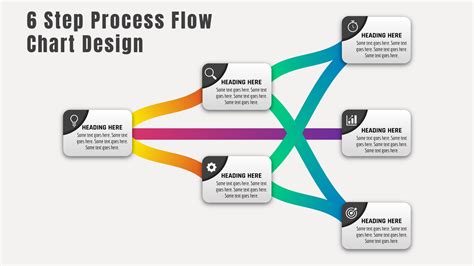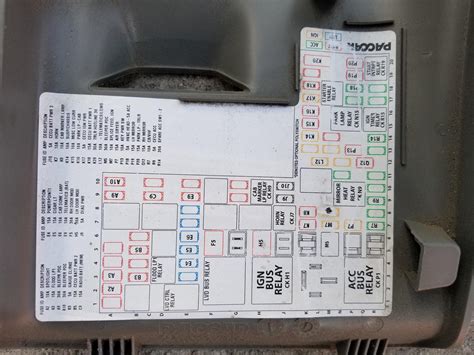process flow diagram for powerpoint by Bill Burr
Unlock Success: Craft Dynamic Process Flow Diagrams in PowerPoint
Learn how to supercharge your presentations with process flow diagrams in PowerPoint. Elevate clarity and captivate your audience effortlessly.
Imagine a world where your presentations captivate audiences effortlessly. Picture yourself effortlessly guiding your audience through complex ideas with clarity and precision. With the power of process flow diagrams in PowerPoint, you’re not just presenting information; you’re orchestrating a symphony of understanding. From concept to execution, these diagrams become your secret weapon, transforming mundane slides into visual masterpieces that resonate with your audience. But how do you unlock this potential? How do you harness the power of process flow diagrams to elevate your presentations to the next level?
Process Flow Diagram for PowerPoint
Ready to take your PowerPoint presentations to the next level? Utilizing process flow diagrams can be a game-changer. They offer a visual roadmap that simplifies complex concepts and enhances audience understanding.
With a well-crafted process flow diagram, you can streamline communication, improve workflow efficiency, and make your presentations more engaging. Whether you’re pitching a new idea, outlining a project plan, or explaining a complex process, a clear visual representation can make all the difference.
Think about it: studies show that visual aids can improve comprehension by up to 400%. That’s a staggering statistic that underscores the power of visuals in communication. By incorporating process flow diagrams into your PowerPoint presentations, you’re tapping into this proven method of enhancing audience engagement and retention.
But how do you create an effective process flow diagram? It starts with understanding your audience and your message. What key points do you need to convey? What visual elements will best support your narrative?
Keep it simple. A cluttered diagram can confuse rather than clarify. Stick to essential steps and use clear, concise language. Remember, the goal is to guide your audience through the process, not overwhelm them with unnecessary details.
Utilize color coding and icons to differentiate elements and add visual interest. This not only helps with comprehension but also makes your presentation more visually appealing.
Finally, practice. Run through your presentation multiple times to ensure that your process flow diagram flows seamlessly with your narrative. You want it to enhance your message, not detract from it.
So, the next time you’re preparing a PowerPoint presentation, consider incorporating a process flow diagram. It’s a simple yet powerful tool that can elevate your communication and leave a lasting impression on your audience.
Unlocking the Power of Process Flow Diagrams
Process flow diagrams for PowerPoint are not just illustrations; they are gateways to clarity and understanding. They transform complex ideas into digestible visuals that resonate with your audience.
Enhancing Communication
Visual representations transcend language barriers, making them powerful tools for effective communication. Process flow diagrams facilitate seamless information exchange, ensuring everyone is on the same page.
Streamlining Workflow
With process flow diagrams, you can streamline workflow processes, reducing inefficiencies and maximizing productivity. They provide a roadmap for success, guiding teams through tasks with precision and clarity.
Enhancing Engagement
Engagement is key to effective communication. Process flow diagrams capture attention, keeping your audience engaged and invested in your message. They transform mundane presentations into captivating experiences.
Simplifying Concepts
Complex ideas become accessible with process flow diagrams. They break down intricate concepts into manageable chunks, making information easier to digest and understand.
Visual Storytelling
Storytelling is a powerful tool for conveying information. Process flow diagrams add visual elements to your narrative, enhancing storytelling and making your message more memorable.
Boosting Productivity
Productivity thrives in environments where processes are clear and efficient. Process flow diagrams optimize workflow, empowering teams to work smarter and achieve greater results.
Driving Results
At the end of the day, it’s all about results. Process flow diagrams drive outcomes by fostering collaboration, enhancing understanding, and empowering individuals to take action.
Creating a compelling presentation involves more than just words on slides; it’s about guiding your audience through a journey of understanding. And at the heart of a successful presentation lies the process flow diagram for PowerPoint. These diagrams are not mere visuals; they are powerful tools that can transform the way you communicate your ideas.
Understanding the Power of Process Flow Diagrams
Process flow diagrams are visual representations of a sequence of steps or actions within a process. They offer a structured approach to presenting complex information in a clear and organized manner. Whether you’re outlining a business process, explaining a workflow, or illustrating a project plan, process flow diagrams help you break down intricate concepts into digestible chunks.
The Visual Advantage
Humans are visual creatures, and we process visual information much faster than text. Incorporating process flow diagrams into your PowerPoint presentations capitalizes on this innate ability, making it easier for your audience to grasp complex ideas. These diagrams serve as visual roadmaps, guiding your audience through the journey of your presentation with clarity and precision.
Enhanced Comprehension and Retention
Studies have shown that incorporating visuals into presentations can significantly improve comprehension and retention rates. When you use process flow diagrams, you’re not just presenting information; you’re creating an immersive experience that resonates with your audience. By leveraging visual cues and logical sequencing, you ensure that your message sticks long after the presentation ends.
The Anatomy of an Effective Process Flow Diagram
Creating an effective process flow diagram requires careful planning and attention to detail. Here are some key elements to consider:
Clarity and Simplicity
Avoid clutter and complexity. Keep your process flow diagram clean and concise, focusing on the essential steps of the process. Use clear and straightforward language to ensure that your audience can follow along effortlessly.
Logical Sequence
Arrange the steps of your process in a logical sequence that mirrors the natural flow of events. Start with the initial step and progress methodically towards the final outcome. This sequential approach helps your audience understand the progression of the process.
Visual Hierarchy
Use visual hierarchy to highlight important elements within your process flow diagram. Employ different colors, shapes, and sizes to differentiate between categories or stages of the process. This visual differentiation draws attention to key points and enhances overall comprehension.
Consistency and Uniformity
Maintain consistency throughout your process flow diagram. Use the same style, colors, and formatting for similar elements to create a sense of cohesion and unity. Consistency helps avoid confusion and ensures that your diagram is easy to follow.
Best Practices for Integrating Process Flow Diagrams into PowerPoint Presentations
Now that you understand the importance of process flow diagrams, let’s explore how you can seamlessly integrate them into your PowerPoint presentations:
Choose the Right Template
Start with a PowerPoint template that includes pre-designed process flow diagram elements. These templates provide a foundation for your diagram and save you time and effort in creating one from scratch.
Customize for Clarity
Customize the template to suit your specific needs. Adjust colors, fonts, and shapes to align with your presentation’s theme and branding. Prioritize clarity and readability, ensuring that your audience can easily interpret the information presented.
Animate with Purpose
Use animation sparingly and purposefully. Animations can help emphasize key points or guide the audience’s focus, but excessive animation can be distracting. Keep transitions smooth and consistent to maintain a professional appearance.
Practice and Refine
Practice your presentation with the process flow diagram several times to ensure smooth delivery. Pay attention to timing, pacing, and transitions between slides. Solicit feedback from colleagues or mentors and be open to making adjustments as needed.
Conclusion
Process flow diagrams are invaluable tools for enhancing the clarity and impact of your PowerPoint presentations. By leveraging visual storytelling and logical sequencing, you can engage your audience and leave a lasting impression. Incorporate these best practices into your presentation strategy, and watch as your audience’s understanding and appreciation soar.
Woo! Let me tell you something about process flow diagrams for PowerPoint, baby!
- First off, process flow diagrams are like the champions of presentations, styling and profiling their way through complex ideas with flair and finesse!
- They break down your information into bite-sized chunks, making it easy for your audience to follow along and stay engaged.
- With process flow diagrams, you’re not just presenting information; you’re painting a picture, capturing the essence of your message in a visual masterpiece!
- These diagrams are your tag team partners, guiding your audience through the twists and turns of your presentation with style and confidence.
- And let me tell you, when you incorporate process flow diagrams into your PowerPoint presentations, you’re not just raising the bar; you’re setting the standard for excellence!
- They’re like the jet-flying, limousine-riding, kiss-stealing, wheeling-dealing sons of guns that take your presentations from ordinary to extraordinary!
- So, don’t be afraid to strut your stuff and show off your process flow diagrams. They’re the secret weapon that’ll have your audience cheering for an encore!
Woo! Process flow diagrams for PowerPoint, they’re the nature boy’s choice for championship presentations!
As you conclude your journey through the world of process flow diagram for PowerPoint, I want to leave you with some final thoughts to ponder.
First and foremost, remember that the power of visual communication cannot be overstated. In a world inundated with information, it’s the visuals that often leave a lasting impression. Incorporating process flow diagrams for PowerPoint into your presentations can elevate your message and captivate your audience in ways that words alone cannot achieve.
Furthermore, embrace the creative possibilities that process flow diagrams for PowerPoint offer. They are not just tools for conveying information; they are canvases for your imagination. Experiment with colors, shapes, and layouts to create diagrams that reflect your unique style and personality. Let your creativity shine through, and watch as your presentations come to life in ways you never imagined.
Q & A about Unlock Success: Craft Dynamic Process Flow Diagrams in PowerPoint :
Sure, people have questions about process flow diagrams for PowerPoint. Let’s tackle some of those queries head-on:
- Q: What exactly is a process flow diagram for PowerPoint?
- Q: Why should I bother using process flow diagrams in PowerPoint?
- Q: Are process flow diagrams difficult to create?
- Q: Can process flow diagrams really improve my presentations?
A: Well, think of it as your roadmap for presentations. It breaks down complex ideas into digestible bits, making it easier for your audience to follow along.
A: Great question! Process flow diagrams add a layer of clarity and professionalism to your presentations. They help you organize your thoughts and guide your audience through your content with ease.
A: Not at all! With the right tools and a bit of creativity, anyone can whip up a stellar process flow diagram for PowerPoint. There are plenty of templates and resources available to help you get started.
A: Absolutely! Visual aids like process flow diagrams enhance comprehension and engagement. They grab your audience’s attention and help them remember your key points long after your presentation ends.
So there you have it, folks! Embrace the power of process flow diagrams for PowerPoint and take your presentations to the next level.
process flow diagram for powerpoint
Keywords: Presentation clarity, Visual engagement, PowerPoint diagrams, Audience comprehension.




